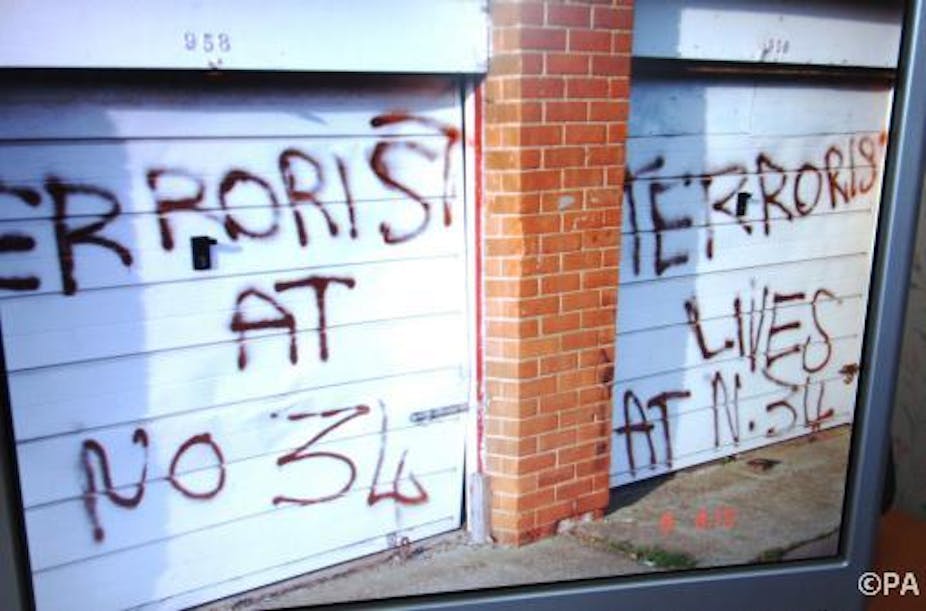For some time now, speculation has raged over the number of young British Muslims travelling to Syria and Iraq with the intention of fighting in the ongoing conflicts there.
At the high end, Birmingham-area MP Khalid Mahmood claimed that “more than 1,500” British Muslims have gone to the Middle East to fight. Meanwhile, Peter Fahy, head of the Prevent counter-terrorism strategy for the Association of Chief Police Officers, offered a more tempered figure of around 500. But ultimately, as Fahy acknowledged, no-one really knows what the number is.
Further speculation followed the posting of a 13-minute recruitment video, the trenchantly titled There is no Life without Jihad, on account pages linked to ISIS (Islamic State of Iraq and the Levant), posted highly explicit videos and photos online purporting to show mass executions.
In this particular video, which urges British Muslims to join the fight in Iraq and Syria, three of the six fighters shown are British: Cardiff-based brothers Nasser and Aseel Muthana (aged 20 and 17 respectively) and another man from Aberdeen, Abdul Raquib Amin.
While the obvious short-term concern is that more British citizens and residents will indeed go and join them, in the longer term, we also have to consider the potential impact of radicalised fighters might have upon returning to the UK.
For Cressida Dick, the Metropolitan Police’s assistant commissioner and head of specialist operations, many of those returning will present Britain with a very real terrorist threat.
Powerless families
Meanwhile, alongside the endless column inches about the recruitment video was the story of three Coventry-based Muslims also believed to have gone to fight in Syria.
Much of the coverage focused on the plight of the families of two of the young men, Ali Kalantar and Khabir Amani (both 18). As the father of Kalantar explained, his family knew nothing about his son’s intentions. Having asked his parents for his passport, saying he needed it for university (he was planning to study at Coventry), he then borrowed £1,000 from one of his brothers telling him it was to buy a computer. Soon after, Kalanter and his two friends are believed to have flown from Birmingham to Turkey in order to travel to the Syrian border.
Fearing for his son’s life, Kalanter’s father described how he thought about his son “every minute” and that his grief was “limitless”.
What was unusual about this reporting was that it presented the families of these boys as being entirely normal, experiencing the same emotions and anxieties that any family might experience in a similar situation. Irrespective of their being Muslim – in fact, the Muslim-ness of the families rarely featured - they were shown as powerless to stop what was going on.
The significance of that should not be understated. Throughout the post-9/11 era, this representation of Muslims has been extremely rare.
As a report I published in 2007 showed, the amount of coverage of Muslims and Islam in the British press had increased by around 270% over the preceding decade. Of that, more than 90% of the coverage was deemed negative, disproportionately focusing on threat, violence and conflict.
This is not to say all that coverage was Islamophobic, indeed far from it. But nonetheless, I argued that such intensely negative coverage was likely to provoke and increase feelings of insecurity, suspicion and anxiety about Muslims amongst non-Muslims. The coverage was feeding into what I describe as the “white noise” that exists about Muslims and Islam. And of course, the revelations about British Muslims going to fight in the Middle East are likely to feed into this too.
Us and them
In the aftermath of 7/7, much of the media coverage (and speculation) focused on the fact that the perpetrators were British-born (or as rendered in political parlance, “home-grown”). The perceived threat therefore appeared much “closer to home”: the enemy was now within.
A clear “us” and “them” dichotomy emerged, tarring all Muslims as terrorists – or at least as potential ones. No longer were the threatening Muslims “over there”; they could be those you worked with or lived next door to. As such, all Muslims were seen to be against and indeed a threat to “our” culture, “our” values, “our” institutions and “our” way of life.
Of course, some British Muslims are in fact going to fight in Syria and Iraq; it is right that this is reported, and that rightful criticism and condemnation is neither withheld nor suppressed – just as when individual Muslim terrorists claim their atrocities were committed in the name of Islam. But this must be done with balance, and from an informed point of view.
As Fahy puts it, unfairly “demonising the Muslim community” is both offensive and deeply counter-productive. Britain’s Muslims are indispensable partners in the mission to stop any more of our citizens going to fight alongside ISIS – as well as in combating any longer-term problems.
Which is why the coverage of the Coventry Muslims going to fight in Syria is so important: it showed the families of those going to fight in Syria as entirely “normal”. For once, Muslims were seen as more like “us” than “them”.
As the impact of the crises in Syria and Iraq continues to be felt here in the UK, we can only hope this apparent improvement holds.
Next, read: A very French jihad: hundreds head to Syria and Paris fears their return

